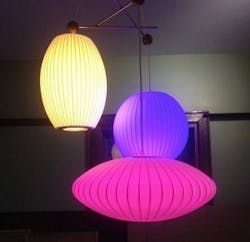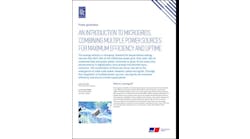LED Sales Three Times Higher Than Expected. Credit: Lloyd Alter
Participation in Nevada’s energy efficiency program led to three times the projected LED sales due in large part to an “instant discount” program.
“Nevada initiated the LED program in 2014 and had three times the level of participation they had planned the first year,” said Howard Geller, executive director of the Southwest Energy Efficiency Project. “Utilities had dropped promotion of CFLs because they are widely adopted and not state of the art. Leds are state of the art.”
The initial target was to sell 170,000 bulbs, but customers bought 550,000 bulbs.
The key to the sales was an instant discount. Customers did not have to fill out a rebate application. In stores, customers saw a display advertising a limited-time discount. In many cases, they didn’t know where the discount was coming from, he said.
Also contributing to the sales were the many options available to customers, he said.
“LED lights are a new generation of technology. The performance has been improving over the last decade in terms of light output. Twenty-five years ago, you couldn’t get replacements for incandescents. Now there’s 40-watt, 60-watt, and 100-watt. Also, the price has come down.”
People are more open to trying out LEDs right now, in part because they’ve seen them in flashlights, streetlights and traffic signals, he said. In addition, people are more aware of the advantages of LEDs.
“There’s much less maintenance, the lights don’t burn out and they’re economical,” he said.
In a July filing, Nevada Power reported it spent 17 percent less than its $50.3 million budget for energy efficiency programs in southern Nevada yet saved 20 percent more energy than expected. In 2014, NPC’s programs saved customers a total of 175 million kWh annually, according to SWEEP.
Sierra Pacific Power Company said that it spent 32 percent less than the budgeted $10.4 million for residential and business energy efficiency programs, yet still yielded 10 percent more energy savings than projected, a total 54 million kWh annually.
Not only do the energy efficiency programs save energy and money, they also can help the state meet the requirements of the federal Clean Power Plan.
NV Energy’s 2014 programs will reduce statewide carbon dioxide emissions by 868,000 metric tons over the lifetime of the energy efficiency measures installed last year, the equivalent of not burning an amount of coal that would fill 4,654 railcars, said SWEEP.
Track the results of LED programs by subscribing to the free Energy Efficiency Markets newsletter.







